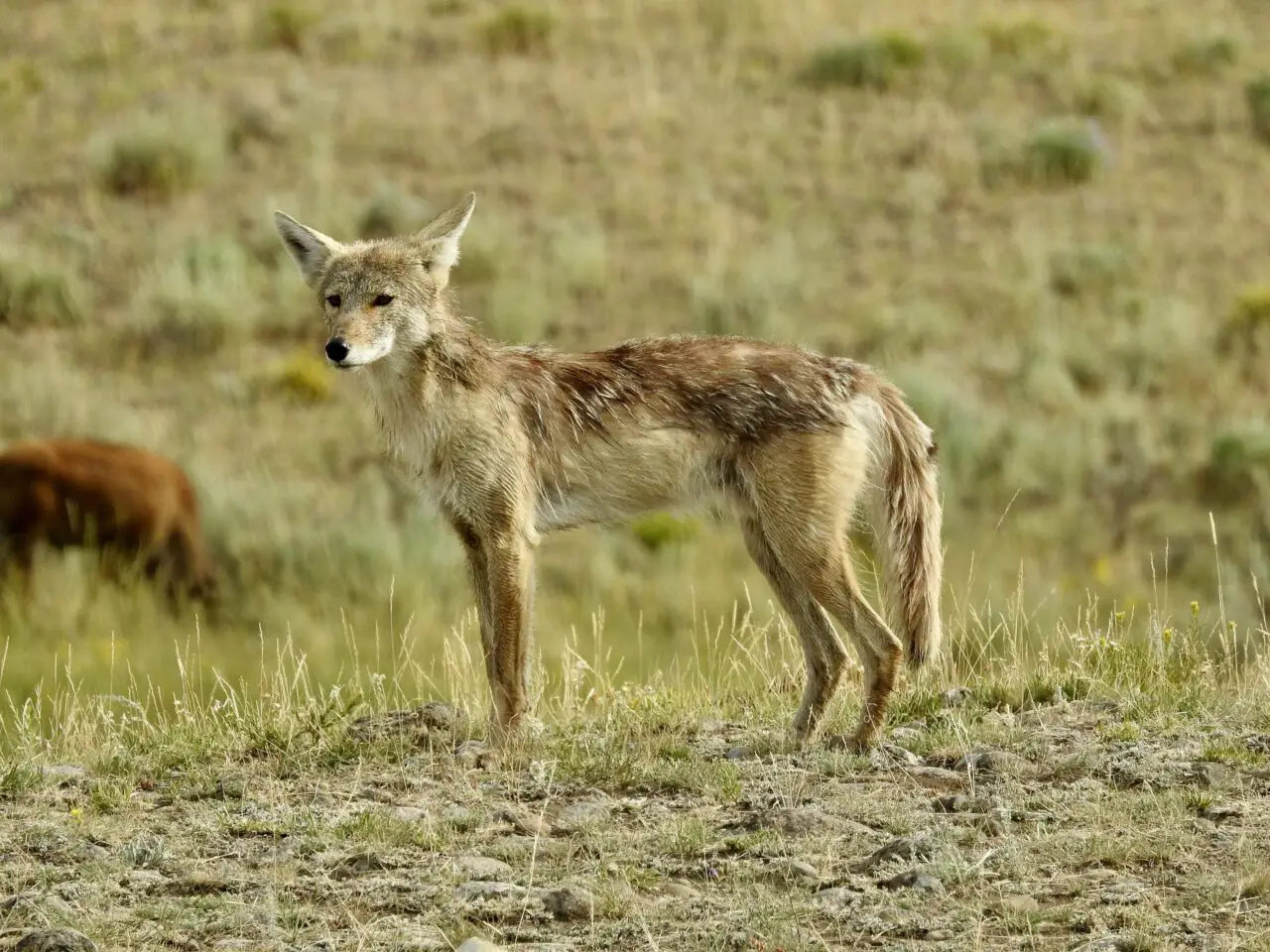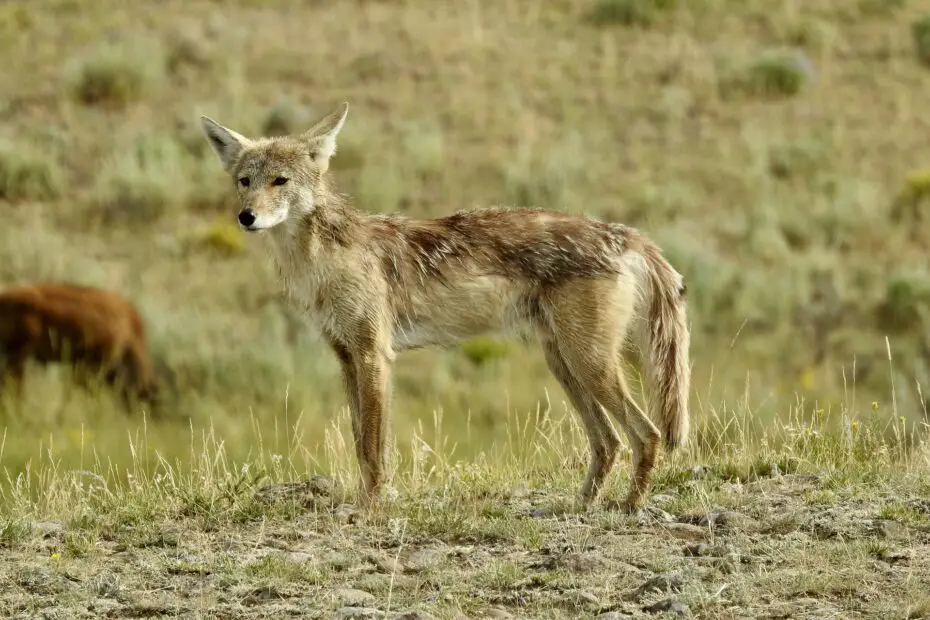What do coyotes eat? Coyotes can survive in a wide range of environments, making them formidable predators. Canis latrans, or the coyote, comes from a long line of predatory canines that first appeared 380,000 years ago. They are significant predators and predatory predators in the ecosystems in which they live.
And what unfortunate creatures does the vicious coyote prey upon? The purpose of this article is to learn more about the diet of coyotes and the methods they use to obtain their food.
You may also want to know what lions eat.
Appearance
Coyotes are members of the canid family, just like wolves. When compared to the enormous wolves to which they are genetically related, these dogs are tiny. The average male coyote is 18 to 44 pounds and measures 3.3 to 4.5 feet in length. Geographic location appears to be a significant factor in the large weight disparity, with northern populations tending to be heavier than their southern counterparts. The fur color of a coyote can range from nearly white to shades of gray and light brown, depending on where it lives.
The coyote has also held significant cultural meaning for humans for many generations. In Mesoamerican art, particularly that of Teotihuacan and Aztec civilizations, coyotes often take on the role of warriors. Native American art and folklore feature these animals prominently. For example, the Chinook, Pawnee, Ute, and Maidu peoples see the coyote as a companion of The Creator, while those of the southwestern and plains regions see it as an untrustworthy trickster. South Dakota has adopted the coyote as its official state mammal.

Food competition
What do coyotes eat and who do they compete with? Coyotes face stiff competition from a wide variety of predators when it comes to food. Historically, gray wolves and coyotes have clashed. The predominance of wolves as hunters means that they are able to easily eliminate the coyotes’ food source or kill them. As wolf populations dropped in the 19th and 20th centuries, coyote numbers rose. Eventually, there were many coyotes living in Yellowstone.
The coyote population dropped by 39 percent after the reintroduction of the gray wolf to the area. Cougars prey on coyotes, which they also compete with for prey. When it comes to the Sierra Nevada, cougars typically outcompete coyotes for the deer population. When compared to wolves, cougars are not as effective at killing coyotes.
What do coyotes eat?
What do coyotes eat? Coyotes are classified as omnivores, but they are actually quite carnivorous and feed on a wide range of different animals depending on their habitat. Coyotes consume a wide variety of animals, including insects, amphibians, fish, small reptiles, birds, rodents, and even larger mammals like white-tailed deer, elk, bighorn sheep, bison, and moose. Coyotes prey on thrashers, sparrows, and even wild turkeys.
Coyotes are capable of speeds of up to 40 mph and can either hunt in packs or independently. Coyotes only prey on larger ungulates when they are in a pack. Even if they are abundant, toads, shrews, moles, and rats are not typically consumed by coyotes. Cannibalism among coyotes extends to the consumption of their own kind.
Coyotes get 90% of their calories from meat, but the other 10% still matter. Peaches, blackberries, pears, blueberries, apples, carrots, cantaloupe, watermelon, and peanuts are just some of the fruits and vegetables that coyotes enjoy. In the winter, coyotes will also eat grains and grass.
Coyotes in human-populated areas have adapted their diet to take advantage of the variety of food sources. This encompasses both domesticated animals and crop plants in rural areas, such as cattle, sheep, maize, wheat, and other foodstuffs. Coyotes in urban areas feed on racoons, rabbits, domestic pets, roadkill, trash, and even garden produce. Coyotes are highly adaptable and can thrive in a wide variety of environments.
Impact
To a certain extent, coyotes and American badgers help each other out. This indicates that the two parties benefit from working together. American badgers will help coyotes dig up rodent burrows when the coyotes are hunting for prey. When faced with a coyote, many small animals will burrow underground, but when confronted by a badger, they will run for cover above ground. Coyotes and badgers often team up to take down prey because the animals are so much easier to hunt when they are in close proximity to one another. If a coyote and badger work together, they can increase their catch rate by 33 percent.
The potential for disease and parasite transmission from a coyote’s diet affects other species as well. Probably due to its wide variety of food sources, the coyote in North America carries more diseases and parasites than any other carnivore in the continent. Rabies, canine distemper, canine hepatitis, multiple strains of equine encephalitis, and oral papillomatosis are just some of the viruses that coyotes can spread.
Parasitic mites can cause mange in coyotes; ticks and, rarely, fleas and lice can also cause health problems. Coyotes are known to carry and spread a variety of parasitic worms, including tapeworms, hookworms, and roundworms. Infestations with tapeworms are common among coyotes, affecting 60-95% of the species. Many parasites and diseases are transmitted through the digestive process. The risk of coyotes harboring parasites, for instance, increases if they consume parasitized cattle.
